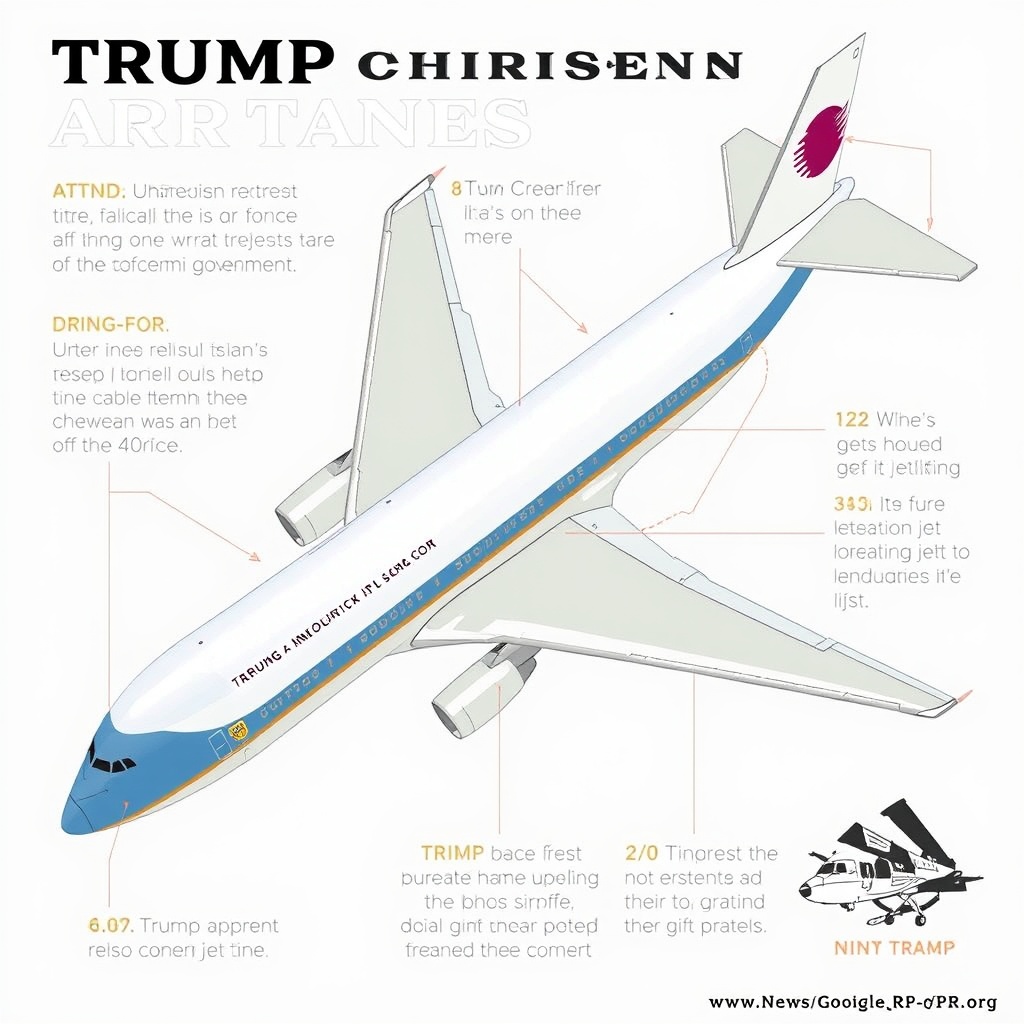Introduction
The Trump administration has made headlines once again with the official acceptance of a Boeing 747-8 luxury jetliner as a gift from the Qatari government. This gift is set to be repurposed as the new Air Force One, the official aircraft of the President of the United States. The move has sparked a mixture of reactions, ranging from praise for the potential cost savings to concerns about the implications of accepting such a significant gift from a foreign government. In this article, we will delve into the details of this development, exploring the history of Air Force One, the features of the new aircraft, and the potential implications of this gift.
History of Air Force One
Air Force One is one of the most recognizable symbols of the power and prestige of the United States. The first aircraft to be designated as Air Force One was a Boeing 707, which was put into service in 1959 during the presidency of Dwight D. Eisenhower. Since then, the aircraft has undergone several upgrades, with the current fleet consisting of two Boeing 747-200B series aircraft, known as VC-25A. These aircraft have been in service since 1987 and have been used by every president since George H.W. Bush.
The current VC-25A aircraft are nearing the end of their lifespan, and the US Air Force has been in the process of procuring new aircraft to replace them. In 2015, Boeing was awarded a contract to build two new 747-8 aircraft, which were expected to enter service in 2024. However, with the acceptance of the Qatari gift, the timeline for the introduction of new Air Force One aircraft may be accelerated.
Features of the New Aircraft
The Boeing 747-8 is a state-of-the-art aircraft, offering a range of features that make it an ideal choice for the President and his staff. The aircraft has a maximum takeoff weight of over 440,000 kg, a range of over 14,000 km, and a top speed of Mach 0.855 (647 mph). The 747-8 also features a number of advanced safety and security features, including a robust communications system, advanced navigation, and a state-of-the-art flight control system.
The Qatari gift aircraft is reportedly a luxury jetliner, configured to provide the highest level of comfort and amenities for its passengers. The interior of the aircraft is likely to be customized to meet the specific needs of the President and his staff, with features such as a private bedroom, a dining area, and a conference room. The aircraft may also be equipped with advanced medical facilities, as well as a range of communication and security systems.
Implications of the Gift
The acceptance of the Qatari gift has raised a number of questions about the implications of this move. One of the most significant concerns is the potential for conflicts of interest, given the close relationship between the Trump administration and the Qatari government. Qatar has been a key player in the Middle East, and the US has maintained a significant military presence in the country.
Another concern is the potential impact on the US aerospace industry. The acceptance of a foreign gift aircraft could be seen as a blow to the domestic industry, which has been a major driver of economic growth and job creation. The Boeing Company, which is the largest aerospace company in the US, has been a major beneficiary of government contracts, including the contract to build the new Air Force One aircraft.
Despite these concerns, the acceptance of the Qatari gift may also have some benefits. The most significant advantage is likely to be the cost savings, as the US government will not have to pay for the purchase of a new aircraft. The gift aircraft is reportedly worth hundreds of millions of dollars, making it a significant gesture of goodwill from the Qatari government.
Case Studies and Statistics
The use of gift aircraft by governments is not unprecedented. In 2013, the Canadian government accepted a gift aircraft from the Royal Canadian Air Force Association, which was used to transport the Governor General and other dignitaries. The aircraft, a Challenger 600, was valued at over $10 million.
In terms of cost savings, the acceptance of the Qatari gift could be significant. The estimated cost of the new Air Force One aircraft, which were contracted in 2015, is over $3.9 billion. The gift aircraft, which is reportedly a luxury jetliner, could provide similar capabilities at a fraction of the cost.
According to a report by the Government Accountability Office (GAO), the annual operating cost of the current VC-25A aircraft is over $200 million. The new aircraft, which will be equipped with more efficient engines and advanced avionics, is expected to reduce operating costs by over 20%. The gift aircraft, which is likely to be equipped with similar features, could provide similar cost savings.
Conclusion
The acceptance of the Qatari gift aircraft as the new Air Force One is a significant development, with both positive and negative implications. While the gift may provide cost savings and accelerate the introduction of new aircraft, it also raises concerns about conflicts of interest and the potential impact on the US aerospace industry.
As the US government moves forward with the acceptance of the gift aircraft, it will be important to carefully consider these implications and ensure that the interests of the US government and its citizens are protected. The use of gift aircraft by governments is not unprecedented, and the US government should draw on the experiences of other countries to inform its decision-making.
Ultimately, the acceptance of the Qatari gift aircraft is a complex issue, with both benefits and drawbacks. As the US government navigates this complex issue, it will be important to prioritize transparency, accountability, and the public interest. With careful consideration and planning, the US government can ensure that the new Air Force One aircraft serves the needs of the President and the American people, while also promoting the interests of the US government and its citizens.


Leave a comment